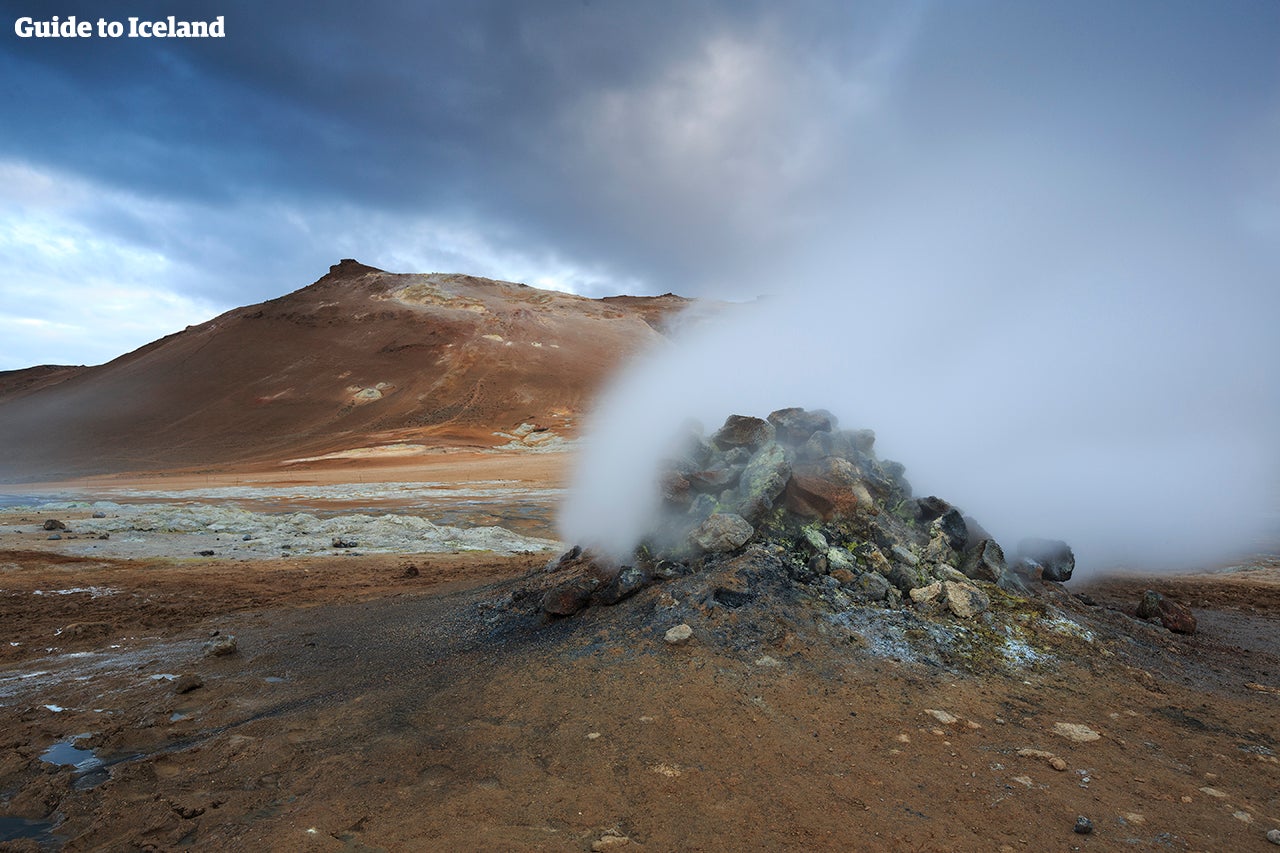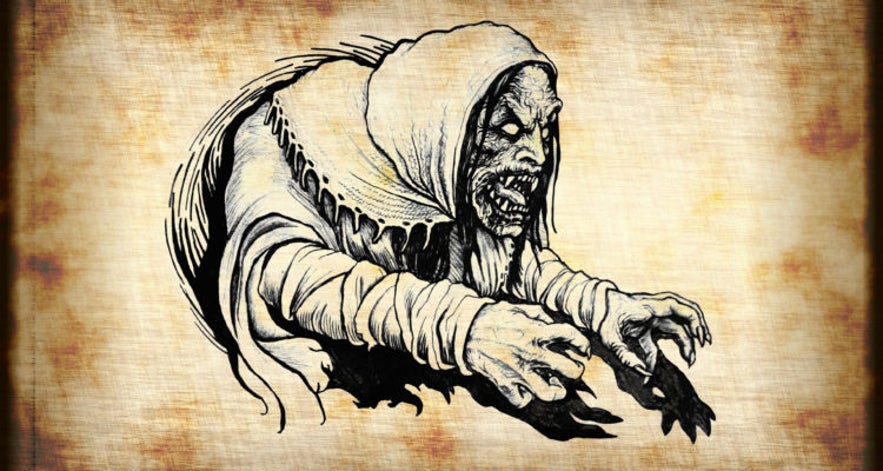
Who are the Icelandic Yule Lads? Who is celebrated in Iceland at Christmas, if not Santa Claus? What role does the giantess Gryla play in Icelandic Christmas folklore, and who is the Christmas Cat? Read on to learn about Gryla and the Yule Lads, Iceland’s most famous Christmas characters!
Christmas in Iceland is a time for bright lights, festivities, delicious food, and… fear. Perhaps fear may be a bit of an exaggeration, but Iceland has some very unique Christmas folklore that has been with the locals for centuries!
Why You Can Trust Our Content
Guide to Iceland is the most trusted travel platform in Iceland, helping millions of visitors each year. All our content is written and reviewed by local experts who are deeply familiar with Iceland. You can count on us for accurate, up-to-date, and trustworthy travel advice.
- See also: Best Christmas Tours and Packages
Instead of the loving Santa Clause many Western cultures are familiar with, the 13 Yule Lads of Iceland are known for their mischief. Their mother, Gryla, is a monstrous ogre that kidnaps and eats naughty children, and if you don't get a new piece of clothing before the holidays, you can expect a visit from the Yule Cat, who shares her appetite!
Read on to learn all about the Icelandic Yule Lads, their fearsome mother, and the legendary Christmas Cat before your visit, and discover Christmas in Iceland!
What to Know About the Icelandic Yule Lads
Throughout the majority of the year, the 13 Santas of Iceland are thought by many to hide in the lava formations of Dimmuborgir, located in the Myvatn area of north Iceland. Others believe they simply live in an unidentified mountainous area. From the 11th of December to the 24th, however, they depart one by one to engage in thirteen days of mischief. Each has different antics, ranging from mischievous to horrifying, which they indulge in across the country until the end of the Christmas Season.
- See also: Christmas Markets in Reykjavik
The 13 Yule Lads are as much a part of the country's festive tradition as the Icelandic Christmas Book Flood and eating smoked lamb.
Today, their image has largely been sanitized. Rather than being depicted as trolls defined by misdeeds, they now often wear traditional red and white clothes, fluffy beards, and wide smiles. Rather than pulling pranks, they simply leave presents in the shoes that children place on their windowsills, a bit like the stockings on fireplaces in other cultures. In place of a piece of coal, naughty Icelandic children will simply find a potato in their shoe in the morning.
Even though they've undergone somewhat of a transformation since the 19th century, the Yule Lads' original looks and behavior tell a wealth of information about Icelandic history, culture, and folklore, and they are a great example of how festive traditions differ around the world.
The Thirteen Icelandic Yule Lads
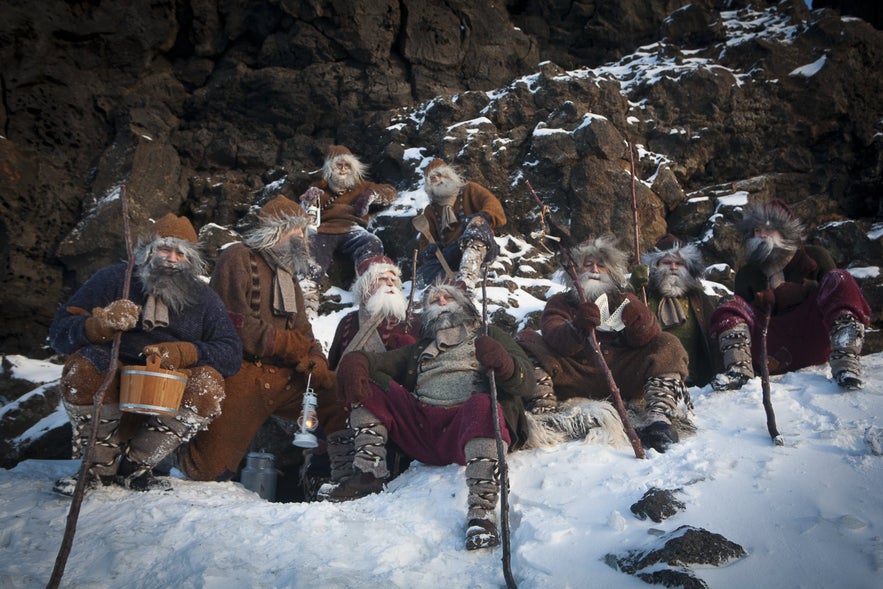 Photo from Meet The Yule Lads in Dimmuborgir, Mývatn
Photo from Meet The Yule Lads in Dimmuborgir, Mývatn
In modern culture, when the season arrives, the 13 Yule Lads descend from the mountains to attend celebrations around the country, playing with children and entertaining revelers. They help make Iceland at Christmas even more of a delight. This, however, is a more family-friendly version of the old Icelandic folklore from where the Yule Lads originate.
Though they did not inherit cannibalism from their mother, the Icelandic Christmas Trolls were still widely feared by children for their creepy behavior. Even adults in Iceland, before industrialization, largely believed in trolls, so many would have been cautious that there was truth to the tales of these Christmas lads.
The Yule Lads' names reflect each of the brother's quirks, which are listed in order below.
Stekkjastaur | Sheep Cote Clod
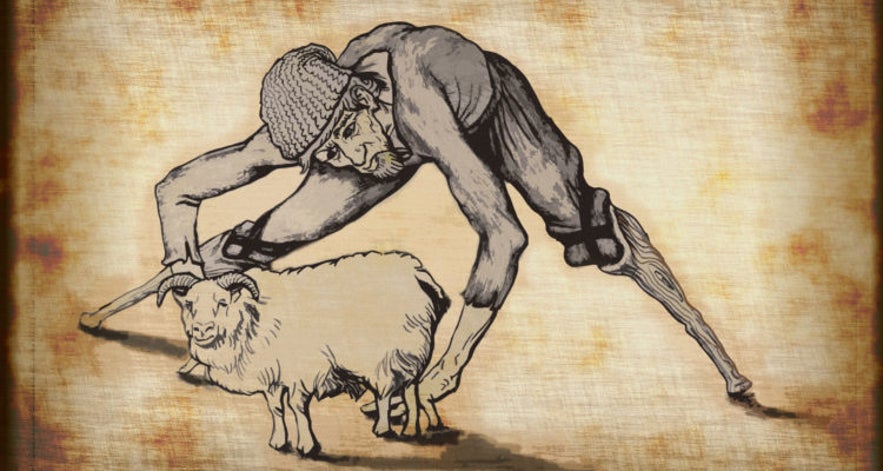 Illustration by Haukur Valdimar Pálsson
Illustration by Haukur Valdimar Pálsson
The first of the Yule Lads to leave the mountains to stir up trouble across Iceland was Stekkjastaur, or "Sheep-Cote Clod." From the 12th of December until the 26th, his modus operandi was to harass the sheep of any household he came across.
Icelanders would usually keep their sheep underground in the winter months, so when the sounds of their tormented bleating would echo up into the house, it was a sign Stekkjastaur had found them. Such a sound, though common in the winter months with storms regularly harassing the flock, became even more ominous, particularly considering that sheep were the lifeblood of every farmstead.
In spite of being a fearsome troll, Stekkjastaur, like many of his brothers, was limited by a deformity. His stiff legs impaired his ability to move, so the best thing to do when hearing him rile up your animals was to wait it out; he’d have to move on to your neighbor soon enough in order to terrorize as many Icelandic homes as possible by sunrise.
Giljagaur | Gully Gawk
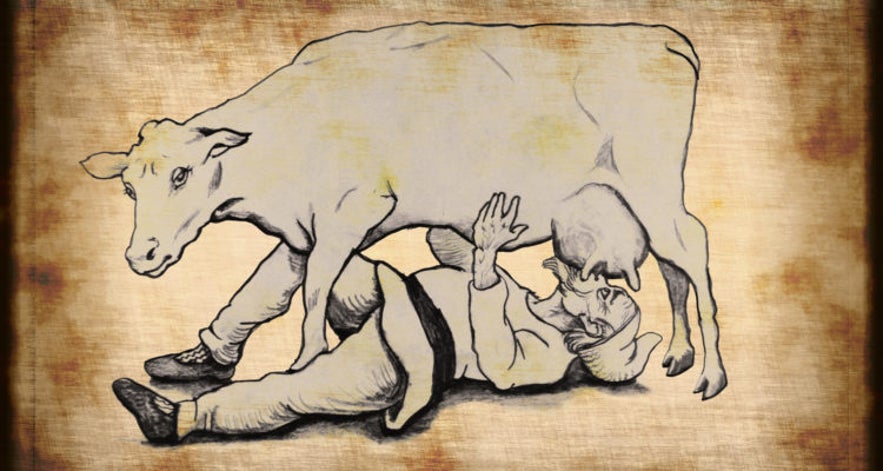 Illustration by Haukur Valdimar Pálsson
Illustration by Haukur Valdimar Pálsson
Giljagaur, or "Gully Gawk," was the second Icelandic Yule Lad to arrive in human settlements. Hiding in the gullies around a house, waiting until its residents have fallen asleep, his method of troublemaking was to break into the cowshed to steal any milk available.
In doing so, he robbed families of the key ingredient in the sauces meant to be enjoyed over the festive season, not to mention the traditional Skyr.
Although only wealthier Icelanders owned cows, most poorer people historically lived on the farmsteads of the rich, meaning all were affected by this troll’s antics.
Stufur | Stubby
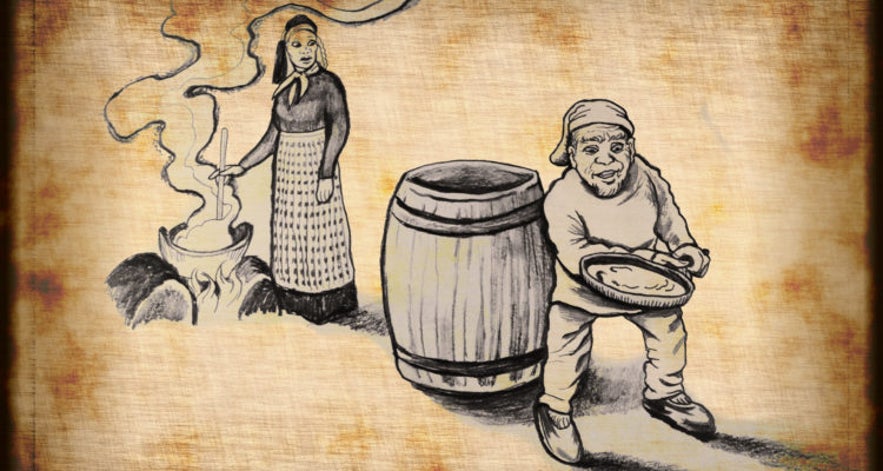 Illustration by Haukur Valdimar Pálsson
Illustration by Haukur Valdimar Pálsson
The third Yule Lad, Stufur or "Stubby," became a nuisance throughout Iceland at Christmas by stealing the household pans for the delicious crust that remained on them. From the 14th to the 26th of December, his appetite was insatiable.
While this may not seem like a terrible crime, historically, pots and pans were incredibly valuable in Iceland. The country had no iron reserves or a mining industry of its own, and such goods had to be imported and were very expensive. For some impoverished families, they were the only possessions worth anything that they had.
Thvorusleikir | Spoon-Licker
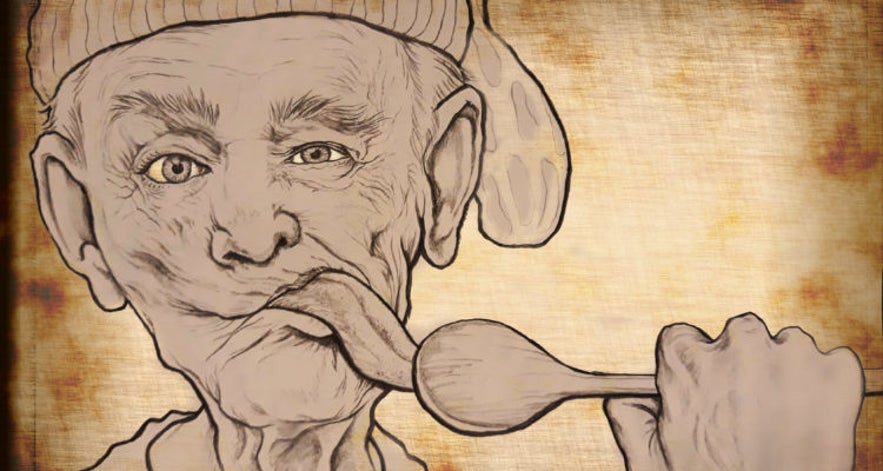 Illustration by Haukur Valdimar Pálsson
Illustration by Haukur Valdimar Pálsson
Thvorusleikir, the fourth Yule Lad, is known in English as "Spoon-Licker." This Christmas troll set out on his nationwide tour of mischief on the fifteenth of December each year, to break into the homes of Icelanders and lick the spoons of households in the hope of a morsel to eat.
Thvorusleikir’s behavior was a result of his strange deformity. He was grotesquely thin from malnutrition, unusual amongst trolls who were most often depicted as overweight and muscular beasts.
The lesson to be learned from Spoon-Licker's behavior is less apparent than with many of the other Yule Lads, although it was perhaps as simple as ensuring children cleaned their cutlery.
Pottaskefill | Pot-Scraper
 Illustration by Haukur Valdimar Pálsson
Illustration by Haukur Valdimar Pálsson
Pottaskefill, known in English as "Pot-Scraper," is like many of his brothers in that his Christmas hi-jinks are gluttonous. Breaking into one home after another, he seeks out pots of sauce, chunks of roast meat left on the tray, saucepans of seasonal vegetables, and scours off anything leftover to eat.
Pottaskefill was no doubt created to encourage children to finish their meals. Leftovers may bring him sniffing at the door. As foodstuffs were meant to be preserved to last throughout the long winter months, any waste was greatly frowned upon. This was because no one dared a fishing trip onto the tumultuous seas in this season, or wanted to slaughter an animal that could otherwise help them sustain their livelihoods in summer.
Askasleikir | Bowl-Licker
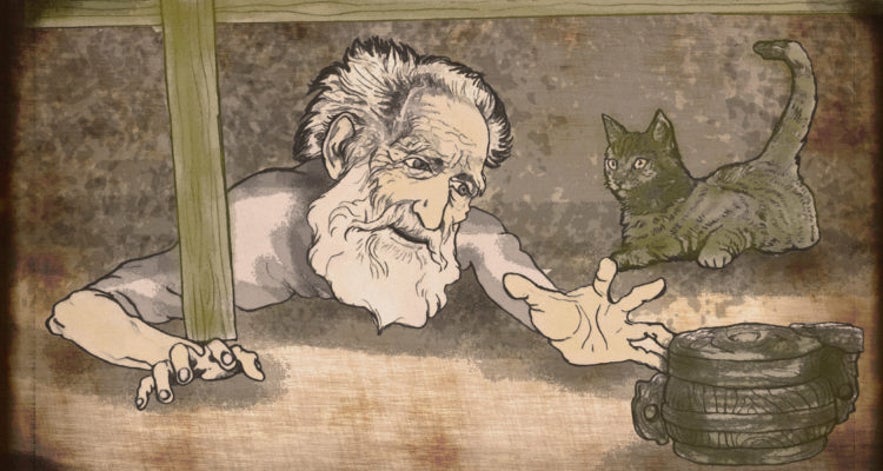 Illustration by Haukur Valdimar Pálsson
Illustration by Haukur Valdimar Pálsson
Gully-Gawk is out stealing milk, Stubby is munching on the crust of pans, Pot-Scraper is scoffing down leftovers and skinny Spoon-Licker is doing exactly what his name suggests. Also on the hunt for an easy morsel was the sixth brother, Askasleikir, although his antics were perhaps the creepiest thus far.
Askasleikir’s name in English is ‘Bowl-Licker.’ He has a reputation for slurping the remains of whatever is left in bowls, or rather of an "askur," which is an Icelandic type of carved bowl with a lid. But the way he does so is rather nightmarish.
Each night, Askasleikir would quite literally lay beneath a child’s bed, waiting for them to finish their nighttime soup or pudding. When they are satisfied, he will readily snatch up the remaining food to guzzle down himself. Perhaps created to get children to go to sleep when asked, or not to indulge in a midnight snack, he epitomizes the trope of the monster under the bed.
Hurdaskellir | Door-Slammer
 Illustration by Haukur Valdimar Pálsson
Illustration by Haukur Valdimar Pálsson
Hurdaskellir has a modus operandi he learned from another of the oldest horror tropes. In English, his name is "Door-Slammer," and as this Yule Lad embarks on his thirteen-day journey over the festive season, it is all he intends to do.
Until the end of the month, he would sneak from home to home, reaching the furthest ends of the Westfjords to the bustling center of Reykjavík, to break in and bang as many doors as he could in order to wake those sleeping inside.
It is doubtless that with the high winds of Iceland’s winter and the makeshift design of many turf houses in Iceland many a child was kept wide awake in terror over the Christmas season, fully believing that Hurðaskellir was making his rounds through their home.
Skyrgamur | Skyr-Gobbler
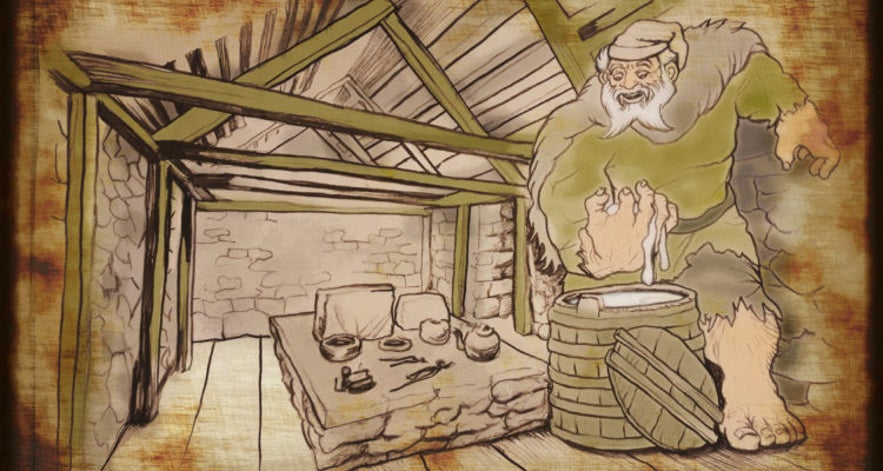 Illustration by Haukur Valdimar Pálsson
Illustration by Haukur Valdimar Pálsson
The meals leading up to Christmas are, without a doubt, some of the best of the year. One can indulge in perfectly cooked poultry, nut roasts, mince pies, gingerbread men, cinnamon rolls, and all manner of other treats. This season in Iceland, however, one dish deserves an extra special mention: the delicious and creamy Skyr.
This healthy, tasty, traditional dairy product can fairly be described as one of Iceland’s true delicacies, especially when compared to dishes such as "hakarl" (fermented shark) and "hrutspungar" (ram's testicles).
While a delight the whole year round, Skyr is a particular treat over Christmas, serving as a refreshment from the number of huge roast meals that usually accompany the holidays.
In terms of Icelandic Christmas folklore, however, people were not the only ones craving Skyr at this time of year. It was also the favorite meal of the eighth Icelandic Yule Lad, Skyrgamur, or "Skyr-Gobbler."
From the 18th until the 30th, this national delight - a compliment to both sweet and savory dishes - was under careful watch should it fall into the hands of this nefarious troll.
Bjugnakraekir | Sausage-Snatcher
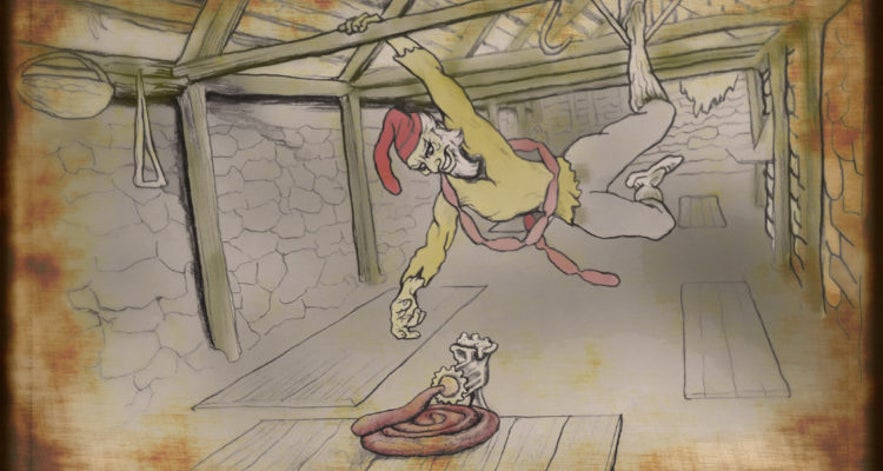 Illustration by Haukur Valdimar Pálsson
Illustration by Haukur Valdimar Pálsson
Smoking meat is one of the favorite cooking methods in Iceland. Smoked fish and lamb are popular throughout the year, as well as smoked sausages known in Icelandic as "bjuga".
From the night of the 20th, however, vigilance was required when preparing the bjuga. It was the only piece of food that the ninth Yule Lad, Bjugnakraekir, or "Sausage-Snatcher," wanted to get his grubby hands on.
Bjugnakraekir had a perfect way of stealing this Icelandic delicacy. It was said that he would break into homes and hide in the rafters, waiting for dinner to be cooked before swooping from above to snatch them.
Gluggagaegir | Window-Peeper
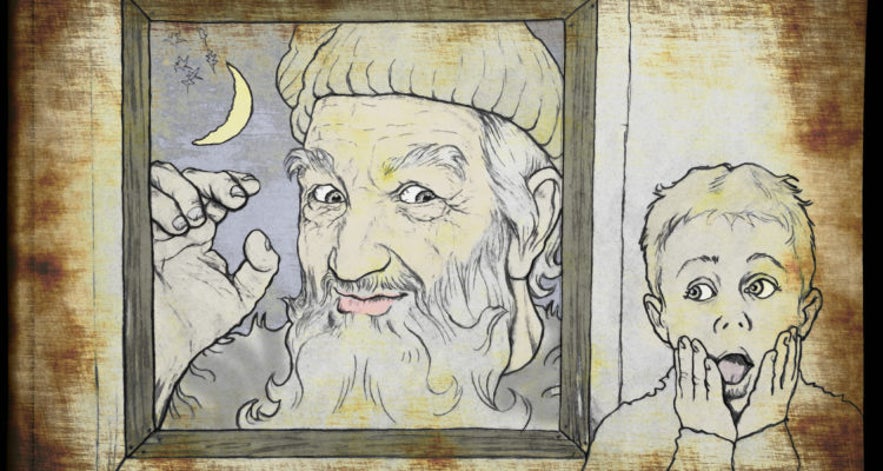 Illustration by Haukur Valdimar Pálsson
Illustration by Haukur Valdimar Pálsson
The tenth Yule Lad to descend from over the festive season was perhaps the creepiest of all: Gluggagaegir, or "Window-Peeper."
Considering the darkness of Iceland’s winters, where there are only four hours of sunlight a day around Christmas, it takes little imagination to picture the fear children must have felt passing the windows of their homes on Christmas nights, terrified that this fearsome troll was looking in upon them.
Like several of the other characters mentioned above, it seems like Gluggagaegir’s chilling behavior was designed as a way to scare children from going outside in the dark winters. It was also a reminder that the child-eating Gryla had eyes across the country, looking out for miscreants.
Gattathefur | Doorway-Sniffer
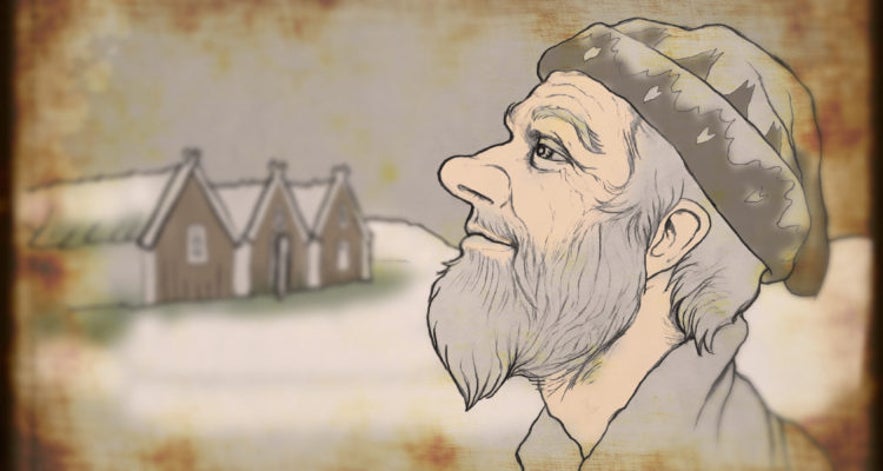 Illustration by Haukur Valdimar Pálsson
Illustration by Haukur Valdimar Pálsson
Gattathefur, or "Doorway-Sniffer," may have come into folklore due to the whistling breaths of the wind creeping through Iceland’s draughty turf houses. Similar to Window-Peeper and Door-Slammer, the idea of him creeping into a home to cause mayhem haunted the nightmares of Iceland’s children.
This was exacerbated by the fact that Gattathefur was renowned for his enormous nose, massive even for his kind. The reason for his sniffing was also nefarious: he was forever seeking out his favorite meal, the Icelandic delicacy of laufabraud (leaf-bread).
This delicious treat is only baked during Christmas time, and making it is often a cherished family affair, especially in the North. It is notable for being round, very thin, fried, and decorated with intricate patterns, usually leaves.
Those renowned for detailed designs had particular umbrage with Gattathefur, as he would often steal their laufabraud before they could impress a single guest with it.
Ketkrokur | Meat-Hook
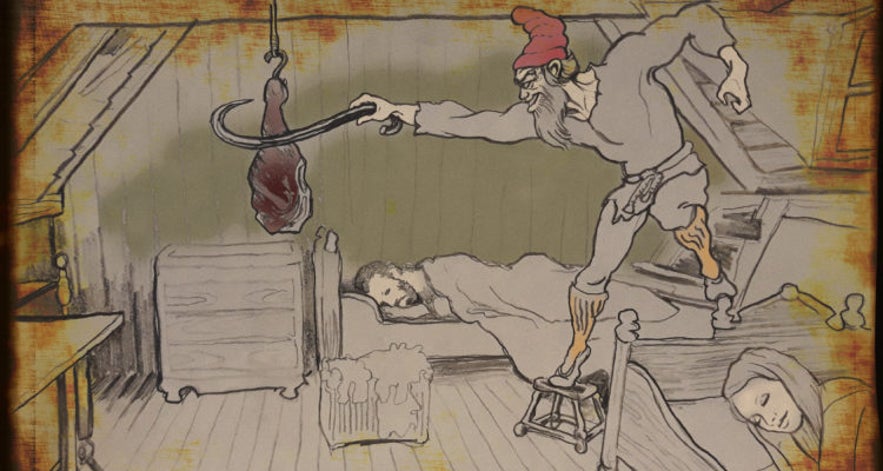 Illustration by Haukur Valdimar Pálsson
Illustration by Haukur Valdimar Pálsson
Christmas culinary traditions vary significantly between families, but there is one common central feature to most festive feasts, and that’s the meat. In Icelandic folklore, however, this was the target of thievery from the twelfth and penultimate Yule Lad, Ketkrokur, or "Meat-Hook."
Lurking wherever he had access to a kitchen (behind doors, under tables, in cupboards, outside open windows), he would lay in wait for the meat of any dish to be slapped onto the counter. As soon as he could avoid capture, he’d pull out his long hook and snag himself the centerpiece of a family meal.
Unlike his brother, Bjugnakraekir, who only sought smoked sausages, Ketkrokur was indiscriminate in his tastes and would wait until the whole family fell asleep before swooping in and stealing whatever meat was hanging around.
Kertasnikir | Candle-Stealer
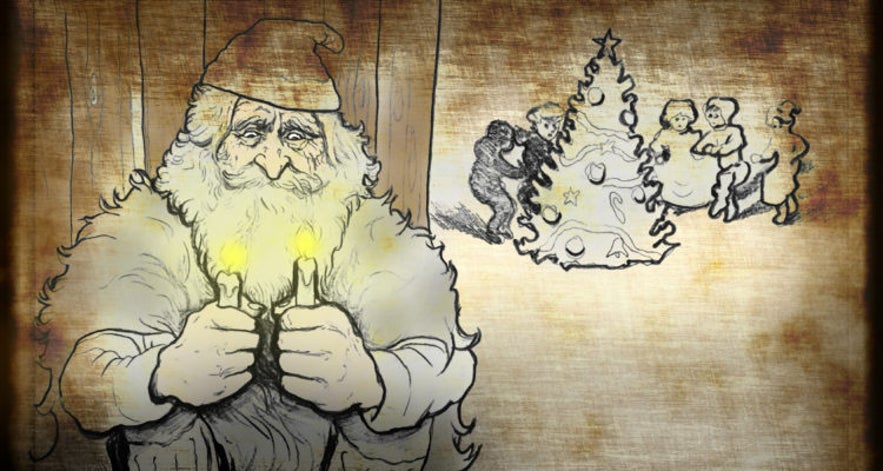 Illustration by Haukur Valdimar Pálsson
Illustration by Haukur Valdimar Pálsson
The final Yule Lad is Kertasnikir, whose name translates to "Candle-Stealer" or "Candle-Beggar." He emerges on Christmas Eve in Iceland. Like his twelve brothers, his name is self-explanatory, although the consequences of his hi-jinks were more troublesome them they may appear.
In the past, candles were incredibly valuable in Iceland, providing light throughout the winter darkness; as noted, this lasts about twenty hours a day over Christmas. Candles were also the only available tool for Icelanders to enjoy their historically favorite pastime of reading, and over Christmas in Iceland, everyone getting together to read is an old tradition.
This custom makes Kertasnikir’s antics all the more troublesome. His intent was not even to use the candles to enjoy novels and poetry. Instead, he sought only to munch on the tallow that the candles were made from.
To get as much of this tallow as possible, he made sure he took it from the easiest targets in a household, the children, by following them to their bedrooms or reading nooks and robbing straight from their hands.
Kertasnikir was, without a doubt, one of the most intrusive Yule Lads and one of the most upsetting to kids. All, however, could take solace in the fact that he was the last, and in thirteen days, he (along with his brothers, mother, and her cat) would be back in the caves in north Iceland, laying dormant until the next Yuletide.
Today, now that the Yule Lads are more family-friendly and tend to give more than they steal, Kertasnikir is the last Yule Lad to give presents to Icelandic children before Christmas and his gift to well-behaved children today is most often a candle.
Gryla | Mother of the Icelandic Yule Lads
 Photo from Wikimedia, Creative Commons, by Andrii Gladii. No edits were made.
Photo from Wikimedia, Creative Commons, by Andrii Gladii. No edits were made.
The Yule Lads may have become more friendly throughout the years, but their mother Gryla is still a frightening troll and remains one of the longest-standing Christmas traditions in Iceland.
This giantess is one of the most evil figures in Icelandic folklore, and horror stories about her are still told to children over the festive season. Throughout the year, it is said that she collects whispers about children around the island misbehaving, and when winter sets in, she sets out to gather them.
Her appetite for the flesh of naughty youths is insatiable, and each year, she finds no shortage of her favorite crop. Collecting them up in a sack, she then cooks them in a pot and turns them into a giant stew that will sustain her until the next winter.
 Photo by Regína Hrönn Ragnarsdóttir
Photo by Regína Hrönn Ragnarsdóttir
Gryla would be terrible enough if she worked alone, but sadly for Icelandic children, she does not. She shares her mountain cave in north Iceland with an enormous black feline called the Christmas Cat, which also has an appetite for human flesh.
The Christmas Cat, however, does not just seek out those who have misbehaved. It happily preys on any child who did not get new clothes to wear for Christmas.
Gryla also lives with her latest husband, a troll named Leppaludi. The least threatening member of her family, he is brow-beaten to the point of pathetic. Perhaps out of fear of what happened to Gryla’s previous partners, whom Gryla is said to have eaten (!), he exerts no influence over her evil tendencies.
The traditions surrounding Gryla say a lot about Icelandic folklore. The fact she was a child-eater who sought out children over the festive season sends a similar message to kids as Santa bearing coal, just with a little less finesse. The message to children is loud and clear: Be on your best behavior during Christmas!
The more brutal delivery of this message is perhaps due to the fact that winters in Iceland were incredibly dangerous, and many disobedient children who went out in the dark and snow never returned home. There was also a lot of work that needed to get done before the darkest months set in, requiring extra diligence and effort from all members of the family.
On this note, the story that the Christmas Cat ate children who did not get clothes as a gift was likely created to ensure that everyone finished their weaving, knitting, and sewing by the end of winter.
 Photo by Regína Hrönn Ragnarsdóttir
Photo by Regína Hrönn Ragnarsdóttir
Gryla was such a terrifying image to children that in the 18th century, the parliament of Iceland outlawed the use of her legend as a scare tactic. Children were no longer threatened with being devoured and were instead given rotten potatoes in their shoes if they misbehaved.
Today, statues of Gryla can be found around the country, such as in the Akureyri Christmas house and by Fossatun, due to her integral role in Icelandic Christmas traditions. Her home is believed by many to be in Dimmuborgir, which is visited on many tours from Akureyri, the capital of north Iceland, and it is a stop on the popular Diamond Circle sightseeing route.
Unique Icelandic Christmas Songs
Like its folklore, Icelandic Christmas songs are unique and deeply tied to local customs. The Yule Lads and their family often take center stage in festive music, with one of the most iconic examples being "Jólasveinar ganga um gólf" ("The Yule Lads Walk Around the Floor").
This beloved song is instantly recognizable to every Icelander and is a staple at Christmas celebrations. Take a listen to it in the video above!
Another popular tune featuring the Yule Lads is "Jólasveinar einn og átta," about how children are excited for them to arrive with gifts from the mountains! The name translates to "Yule lads, one and eight," which has been a topic of speculation for a long time. That would make the total count nine, but they're usually said to be thirteen!
This may be the result of changing beliefs throughout time, as there are actually stories of many more Yule Lads existing in different areas of Iceland before the iconic group of 13 brothers became the certified belief in Iceland today!
It’s not just the Yule Lads who get their own songs during the holidays; other members of their families do, too! “Jólakötturinn” ("The Yule Cat") is another iconic song, telling the story of how people were desperate to finish making new clothes for Christmas to avoid his wrath. This chilling tune is performed by none other than Björk, so take a listen in the video above!!
Will you visit Iceland this winter? Would you celebrate the holidays in Iceland? Which of these folklore characters sounds the most interesting? Have you heard about them before? Share your thoughts and experiences in the comment section below!


